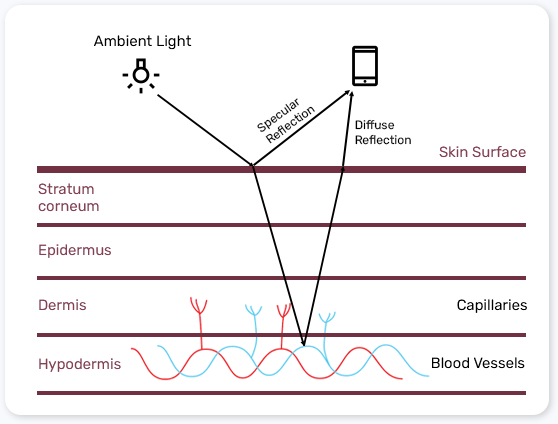How it Works
The principle is based on the measurement of subtle changes in light reflected from the skin. Small motions of the body, due to the mechanical flow of blood provide complementary cardiac and blood oxygen information. The principle itself has been known to Health Sciences for over 80 years and is similar to pulse oximeters. With AI developments and improved technology greater analysis is now possible and the underlying tool set is used by hundreds of institutions around the world.
Fingerprint
Photoplethysmography (PPG) is a simple and inexpensive contact based measurement.
It is a non-invasive technology that uses a light source and a photodetector at the surface of skin to measure the volumetric variations of blood circulation.

Camera Facially
Remote Photoplethysmography (RPPG) is based on the same principles as PPG but is a contactless measurement.
It measures the variance of red, green, and blue light reflection changes from the skin, as the contrast between specular reflection and diffused reflection.

Usage recommendations
- Best results are obtained if you position the device on a flat surface rather than holding it in your hand.
- The ambient light should be equally spread on the face and the light source should not come from behind.
- Do not talk or move while scanning the face and make sure the face is free of masks or long fringes.